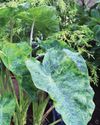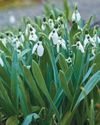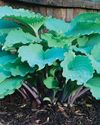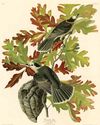
During our search for a new house last year, my wife and I developed a strategy when visiting potential properties. Carrie and our rea-estate agent would go in the front door to evaluate the house while I assessed the garden. As they reviewed the floor plan, bedroom count and storage space inside, I looked at the lay of the land, soil quality and the patio space outside.
Though I didn't have time to complete a full site survey and analysis like I do at the beginning of a design project, there were a few quick appraisals I could make that told me if the garden stood in decent shape or needed work.
After decades working in gardens, I find this evaluation comes naturally, but it's also something simple anyone can do. Whether you are assessing your landscaping after gardening on the property for many years or you're looking at it as a new homeowner, there are several important features to review above and beyond the prettiness of the plants. These include landform, soil and structures. Here's how to do it.
Landform: THE LAY OF THE LAND
Every garden assessment starts with a study of slopes, because these will affect the potential use of the outdoor areas and indicate how water moves through the property. Surface water runoff shapes a landscape, making proper drainage a key component in every garden. Large, complex properties may require a grading survey to understand the lay of the land, but most homeowners can see everything they need to know simply by observing the surface water.
Bu hikaye Horticulture dergisinin November - December 2022 sayısından alınmıştır.
Start your 7-day Magzter GOLD free trial to access thousands of curated premium stories, and 9,000+ magazines and newspapers.
Already a subscriber ? Giriş Yap
Bu hikaye Horticulture dergisinin November - December 2022 sayısından alınmıştır.
Start your 7-day Magzter GOLD free trial to access thousands of curated premium stories, and 9,000+ magazines and newspapers.
Already a subscriber? Giriş Yap

Pot It Up
Shake up the containergarden with theseNorth America –native perennials

THE GARDEN PATH TO PERDITION
I WAS CRUISING RIGHT ALONG, feeling okay about myself, when I came across a list of the Seven Deadly Sins.

A Productive PATIO
Tiny fruit, vegetable and herb plants help gardeners maximize any sort of growing space

TROPICAL FUSION
A FUSS-FREE APPROACH TO USING BOLD TROPICAL PLANTS IN ANY TEMPERATE GARDEN

WINTER READING
Pass the time with any of these inspiring books

SENSING A PATTERN
Greg Coppa reflects on an odd weather year and what continued warming may mean for his Rhode Island garden

TOP-PRIZE PERENNIALS
A foliage masterpiece for shade and a late bloomer for sun

MARK WESSEL
What's new for fruit and vegetable gardeners?

KINGS OF THE NORTHERN FORESTS
A look at the trees, shrubs and perennial plants that bolster life in Ecoregion 5

PROJECT FEEDERWATCH
Gardeners can help scientists know just where the birds are in winter